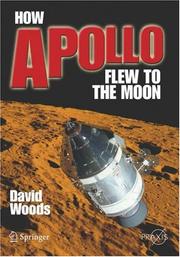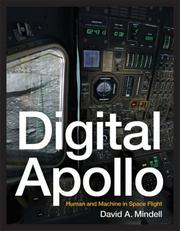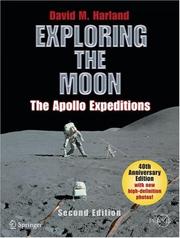| Listing 1 - 10 of 11 | << page >> |
Sort by
|
Book
ISBN: 9780415317115 9780415317108 0415317118 041531710X 9780203581711 9781134372041 9781134372089 9781134372096 Year: 2008 Publisher: London New York : Routledge,
Abstract | Keywords | Export | Availability | Bookmark
 Loading...
Loading...Choose an application
- Reference Manager
- EndNote
- RefWorks (Direct export to RefWorks)
Book
ISBN: 9780970059154 0970059159 Year: 2008 Volume: 43 Publisher: Cincinnati, Ohio : American Society for Papyrologists,
Abstract | Keywords | Export | Availability | Bookmark
 Loading...
Loading...Choose an application
- Reference Manager
- EndNote
- RefWorks (Direct export to RefWorks)
Monastic and religious life --- Monasticism and religious orders --- Vie religieuse et monastique --- Monachisme et ordres religieux --- History --- Histoire --- Monastery of Apollo at Bawit (Bawit, Egypt) --- Bawit (Egypt) --- Bawit (Egypte) --- Church history --- Histoire religieuse --- Bāwīt (Egypte) --- Coptic monasticism and religious orders --- Coptic monasticism and religious orders. --- Monastic and religious life. --- Apollokulten --- Andliga ordnar --- Kopter --- Historia --- Monastery of Apollo at Bawit (Bawit, Egypt). --- Kloster Bawiti. --- Bawiti / Kloster. --- To 1500. --- Egypt --- Monastic life --- Spirituality (in religious orders, congregations, etc.) --- Spiritual life --- Vows --- Monasticism and religious orders, Coptic --- Coptic monasteries --- Christianity --- Monastery of Apa Apollo at Bawit (Bawit, Egypt) --- Monastery of St. Apollo (Bawit, Egypt) --- Deir Abu Abullu (Bawit, Egypt) --- Dayr Anba Abullu --- Hermopolite Monastery of Apa Apollo (Bawit, Egypt) --- Monastery of Apa Apollo (Bawit, Egypt) --- Baouit (Egypt) --- Monastère Apa Apollo (Bāwit, Égypte) --- Sources

ISBN: 1281216666 9786611216665 038774066X 0387716750 Year: 2008 Publisher: New York : Chichester, U.K. : Springer Verlag ; Published in association with Praxis Pub.,
Abstract | Keywords | Export | Availability | Bookmark
 Loading...
Loading...Choose an application
- Reference Manager
- EndNote
- RefWorks (Direct export to RefWorks)
Out of the technological battlefield of World War II came a team of gifted German engineers and designers who developed the vengeance weapon, the V-2, which evolved into the peaceful, powerful Saturn V rocket to take men to the Moon. David Woods tells the exciting story, starting from America’s post war astronautical research facilities, that used the V-2 for the development of the robust, resilient and reliable Saturn V launcher. He describes the initial launches through manned orbital spaceflights, comprehensively detailing each step, including computer configuration, the role of ground control, trajectory planning, lunar orbiting, separation of the lander, walking and working on the Moon, retrieval of the lunar astronauts and returning to Earth in this massive technical accomplishment.
Space flight to the moon. --- Space flight. --- Project Apollo (U.S.) --- History. --- Apollo Project (U.S.) --- United States. --- Progetto Apollo (U.S.) --- Rocket flight --- Space travel --- Spaceflight --- Aeronautics --- Astrodynamics --- Astronautics --- Interplanetary voyages --- Navigation (Astronautics) --- Flight to the moon --- Lunar expeditions --- Lunar flight --- Flights --- Astrophysics. --- Astronomy, Observations and Techniques. --- Space Sciences (including Extraterrestrial Physics, Space Exploration and Astronautics). --- Astronomical physics --- Astronomy --- Cosmic physics --- Physics --- Observations, Astronomical. --- Astronomy—Observations. --- Space sciences. --- Science and space --- Space research --- Cosmology --- Science --- Astronomical observations --- Observations, Astronomical --- USA.

ISBN: 0262266679 1435643291 9780262266673 9781435643291 9780262266680 0262266687 0262134977 9780262134972 9780262516105 Year: 2008 Publisher: Cambridge, MA : MIT Press,
Abstract | Keywords | Export | Availability | Bookmark
 Loading...
Loading...Choose an application
- Reference Manager
- EndNote
- RefWorks (Direct export to RefWorks)
How human pilots and automated systems worked together to achieve the ultimate in flight--the lunar landings of NASA's Apollo program.As Apollo 11's Lunar Module descended toward the moon under automatic control, a program alarm in the guidance computer's software nearly caused a mission abort. Neil Armstrong responded by switching off the automatic mode and taking direct control. He stopped monitoring the computer and began flying the spacecraft, relying on skill to land it and earning praise for a triumph of human over machine. In Digital Apollo, engineer-historian David Mindell takes this famous moment as a starting point for an exploration of the relationship between humans and computers in the Apollo program. In each of the six Apollo landings, the astronaut in command seized control from the computer and landed with his hand on the stick. Mindell recounts the story of astronauts' desire to control their spacecraft in parallel with the history of the Apollo Guidance Computer. From the early days of aviation through the birth of spaceflight, test pilots and astronauts sought to be more than "spam in a can" despite the automatic controls, digital computers, and software developed by engineers.Digital Apollo examines the design and execution of each of the six Apollo moon landings, drawing on transcripts and data telemetry from the flights, astronaut interviews, and NASA's extensive archives. Mindell's exploration of how human pilots and automated systems worked together to achieve the ultimate in flight--a lunar landing--traces and reframes the debate over the future of humans and automation in space. The results have implications for any venture in which human roles seem threatened by automated systems, whether it is the work at our desktops or the future of exploration.
Human-machine systems. --- Astronautics --- Manned space flight --- History. --- Project Apollo (U.S.) --- Human operators (Systems engineering) --- Human subsystems (Systems engineering) --- Man-machine control systems --- Man-machine systems --- Operator-machine systems --- Apollo Project (U.S.) --- United States. --- Progetto Apollo (U.S.) --- Engineering systems --- Human engineering --- SCIENCE, TECHNOLOGY & SOCIETY/General --- PHYSICAL SCIENCES/General --- COMPUTER SCIENCE/Human Computer Interaction --- Human-machine systems --- Systèmes homme-machine --- Astronautique --- History --- Histoire
Book
ISBN: 9783525252833 3525252838 Year: 2008 Volume: 174 Publisher: Göttingen Vandenhoeck & Ruprecht
Abstract | Keywords | Export | Availability | Bookmark
 Loading...
Loading...Choose an application
- Reference Manager
- EndNote
- RefWorks (Direct export to RefWorks)
Delphian oracle --- Oracles, Greek --- Mysteries, Religious --- Temples, Greek --- Oracle de Delphes --- Oracles grecs --- Mystères religieux --- Temples grecs --- Didymaeum (Didyma) --- Greece --- Claros Site (Turkey) --- Grèce --- Claros (Ville ancienne) --- Religion --- Apollo --- Cult --- Religious life and customs --- Mystères religieux --- Grèce --- Apollo (Greek deity) --- Greek oracles --- Cults --- Didyma (Extinct city) --- Branchidae (Extinct city) --- Didyma (Ancient city) --- Didymi (Extinct city) --- Turkey --- Clarus Site (Turkey) --- Klaros Site (Turkey) --- Religious life and customs. --- Antiquities --- Oracles, Greek - Turkey - Claros Site --- Apollo - (Deity) - Cult - Turkey - Claros Site --- Claros Site (Turkey) - Religious life and customs --- Apollo - (Deity)

ISBN: 1281401226 9786611401221 0387746412 0387746382 Year: 2008 Publisher: Berlin : Chichester, UK : Springer ; Praxis Pub.,
Abstract | Keywords | Export | Availability | Bookmark
 Loading...
Loading...Choose an application
- Reference Manager
- EndNote
- RefWorks (Direct export to RefWorks)
David Harland opens with a review of the robotic probes, namely the Rangers which returned television before crashing into the Moon, the Surveyors which 'soft landed' in order to investigate the nature of the surface, and the Lunar Orbiters which mapped prospective Apollo landing sites. He then outlines the historic landing by Apollo 11 in terms of what was discovered, and how over the next several missions the program was progressively geared up to enable the final three missions each to spend three days on comprehensive geological investigations. He concludes with a review of the robotic spacecraft that made remote-sensing observations of the Moon. Although aimed at the enthusiast, and can be read as an adventure in exploration, the book develops the scientific theme of lunar geology, and therefore will be of use as background reading for undergraduate students of planetary sciences. In addition, with the prospect of a resumption of human missions, it will help journalists understand what Apollo achieved after the 'flags and footprints' of the Apollo 11 landing in July1969 and will commemorate the fortieth anniversary of that momentous event. Highlighted as a "Commemorative Edition" on the cover, this second edition has a new foreword by one of the original astronauts and a short extra section at the end previewing the prospect of a renewal of human exploration of the Moon. It will include new extra high quality graphics which are only now available and 32 pages of colour illustrations. From the reviews of the first edition - "A detailed guide to what the astronauts did during their stays on the lunar surface. Walk(s) the reader through the prospecting excursions and then incorporate(s) decades of subsequent analysis to put the explorations of dust, rocks, craters, and rilles into geologic context." SKY & TELESCOPE "EXPLORING THE MOON is very well illustrated…All aficionados of the Apollo program will find much to appreciate in [this book]. "…this is an interesting account of one of the most extraordinary decades in history…a very different book. David Harland probably knows more about the nuts and bolts of the Russian and American space programs than any other author and it shows.”LUNAR & PLANETARY INFORMATION BULLETIN.
Space flight to the moon. --- Project Apollo (U.S.) --- History. --- Moon --- Exploration. --- Flight to the moon --- Lunar expeditions --- Lunar flight --- Apollo Project (U.S.) --- United States. --- Progetto Apollo (U.S.) --- Astronomy. --- Astronautics. --- Astrophysics. --- Planetology. --- Popular Science in Astronomy. --- Aerospace Technology and Astronautics. --- Space Sciences (including Extraterrestrial Physics, Space Exploration and Astronautics). --- Astronomy, Observations and Techniques. --- History of Science. --- Planetary sciences --- Planetology --- Astronomical physics --- Astronomy --- Cosmic physics --- Physics --- Space sciences --- Aeronautics --- Astrodynamics --- Space flight --- Space vehicles --- Annals --- Auxiliary sciences of history --- Aerospace engineering. --- Space sciences. --- Observations, Astronomical. --- Astronomy—Observations. --- Astronomical observations --- Observations, Astronomical --- Science and space --- Space research --- Cosmology --- Science --- Aeronautical engineering --- Astronautics --- Engineering
Book
ISBN: 0387096302 0387096299 Year: 2008 Publisher: New York, NY : Springer New York : Imprint: Praxis,
Abstract | Keywords | Export | Availability | Bookmark
 Loading...
Loading...Choose an application
- Reference Manager
- EndNote
- RefWorks (Direct export to RefWorks)
When the mighty Rocketdyne F-1 engine was conceived in the late 1950s for the U.S. Air Force, it had no defined mission and there was no launch vehicle it could power. It was a bold concept to push the technological envelope of rocket propulsion in order to put massive payloads into Earth orbit. Few realized at the time that the F-1 would one day propel American astronauts to the Moon. In The Saturn V F-1 Engine, Anthony Young tells the amazing story of unbridled vision, bold engineering, explosive failures during testing, unrelenting persistence to find solutions, and ultimate success in launching the Saturn V with a 100 percent success rate. The book contains personal interviews with many Rocketdyne and NASA personnel involved in the engine’s design, development, testing and production; is lavishly illustrated with black-and-white and color photographs, many never previously published is the first complete history of the most powerful rocket engine ever built. The F-1 engine remains the high point in U.S. liquid rocket propulsion – it represents a period in American history when nothing was impossible.
Astronautics. --- Astronomy. --- Astrophysics. --- Aerospace Technology and Astronautics. --- Popular Science in Astronomy. --- Space Sciences (including Extraterrestrial Physics, Space Exploration and Astronautics). --- Saturn launch vehicles. --- Rocket engines. --- Space vehicles --- Propulsion systems. --- Saturn Project (U.S.) --- Project Apollo (U.S.) --- History. --- Interplanetary propulsion --- Space flight propulsion systems --- Space propulsion --- Propulsion systems --- Rocket motors --- Rockets (Aeronautics) --- Launch vehicles (Astronautics) --- Motors --- Apollo Project (U.S.) --- United States. --- Progetto Apollo (U.S.) --- Saturn Program (U.S.) --- Project Saturn (U.S) --- Astronomical physics --- Astronomy --- Cosmic physics --- Physics --- Space sciences --- Aeronautics --- Astrodynamics --- Space flight --- Aerospace engineering. --- Space sciences. --- Science and space --- Space research --- Cosmology --- Science --- Aeronautical engineering --- Astronautics --- Engineering
Book
ISBN: 1282272756 9786613815156 0813544726 9780813544724 9781282272750 6613815152 9780813542669 0813542669 Year: 2008 Publisher: New Brunswick, N.J. : Rutgers University Press,
Abstract | Keywords | Export | Availability | Bookmark
 Loading...
Loading...Choose an application
- Reference Manager
- EndNote
- RefWorks (Direct export to RefWorks)
Zeus, Medusa, Hercules, Aphrodite. Did you know that these and other dynamic deities, heroes, and monsters of Greek and Roman mythology live on in the names of trees and flowers? Some grow in your local woodlands or right in your own backyard garden. In this delightful book, botanist Peter Bernhardt reveals the rich history and mythology that underlie the origins of many scientific plant names. Unlike other books about botanical taxonomy that take the form of heavy and intimidating lexicons, Bernhardt's account comes together in a series of interlocking stories. Each chapter opens with a short version of a classical myth, then links the tale to plant names, showing how each plant "resembles" its mythological counterpart with regard to its history, anatomy, life cycle, and conservation. You will learn, for example, that as our garden acanthus wears nasty spines along its leaf margins, it is named for the nymph who scratched the face of Apollo. The shape-shifting god, Proteus, gives his name to a whole family of shrubs and trees that produce colorful flowering branches in an astonishing number of sizes and shapes. Amateur and professional gardeners, high school teachers and professors of biology, botanists and conservationists alike will appreciate this book's entertaining and informative entry to the otherwise daunting field of botanical names. Engaging, witty, and memorable, Gods and Goddesses in the Garden transcends the genre of natural history and makes taxonomy a topic equally at home in the classroom and at cocktail parties.
Plants --- Plant lore --- Ethnobotany --- Botanical names --- Botanical nomenclature --- Botany --- Latin names of plants --- Latin plant names --- Names of plants, Scientific --- Plant names, Latin --- Plant names, Scientific --- Plant species --- Scientific names of plants --- Scientific plant names --- Mythology. --- Names --- Greco-Roman Mythology, Plants, Scientific Names, Garden, gardeners, high school teachers, professors of biology, botanists, conservationists, Apollo, Proteus.
Book
ISBN: 9789004161856 9004161856 9004217142 9789004217140 Year: 2008 Volume: *2 Publisher: Leiden ; Boston : Brill,
Abstract | Keywords | Export | Availability | Bookmark
 Loading...
Loading...Choose an application
- Reference Manager
- EndNote
- RefWorks (Direct export to RefWorks)
This volume on Apollonius of Rhodes, whose Argonautica is the sole full-length epic to survive from the Hellenistic period, comprises articles by eighteen leading scholars from Europe and America. Their contributions cover a wide range of issues from the history of the text and the problems of the poet's biography through questions of style, literary technique and intertextual relations to the epic's literary and cultural reception. The aim of this 2nd edition is to give an up-to-date outline of the scholarly discussion in these areas and to provide a survey of recent and current trends in Apollonian studies which will be useful also to students of Hellenistic poetry in general.
Greek poetry, Hellenistic --- Epic poetry, Greek --- Argonauts (Greek mythology) in literature. --- Jason (Greek mythology) in literature. --- Medea (Greek mythology) in literature. --- History and criticism. --- Apollonius, --- Medea, --- In literature. --- Jason --- Epic poetry, Greek. --- Greek poetry, Hellenistic. --- Literature. --- Belles-lettres --- Western literature (Western countries) --- World literature --- Philology --- Authors --- Authorship --- Hellenistic Greek poetry --- Greek literature, Hellenistic --- Greek epic poetry --- Epic poetry, Classical --- Greek poetry --- Mēdeia, --- Μήδεια, --- Argonautica (Apollonius, Rhodius) --- Argonautika (Apollonius, Rhodius) --- Apollōniou tou Rhodiou Argonautikōn biblia dʹ (Apollonius, Rhodius) --- Argonautikōn biblia dʹ (Apollonius, Rhodius) --- Argonautikōn biblia tessara (Apollonius, Rhodius) --- Apollonii Rhodii Argonauticorum libros quatuor ... recensuit Ludovicus Hörstel (Apollonius, Rhodius) --- Argonauticorum libros quatuor ... recensuit Ludovicus Hörstel (Apollonius, Rhodius)
Book
ISBN: 9782869581975 2869581971 Year: 2008 Volume: 331 Publisher: Athènes : Ecole française d'Athènes,
Abstract | Keywords | Export | Availability | Bookmark
 Loading...
Loading...Choose an application
- Reference Manager
- EndNote
- RefWorks (Direct export to RefWorks)
Shrines --- Inscriptions, Greek --- Excavations (Archaeology) --- Sanctuaires --- Inscriptions grecques --- Fouilles (Archéologie) --- Sanctuary of Apollo (Delos Island, Greece) --- Delos Island (Greece) --- Athens (Greece) --- Délos (Grèce) --- Athènes (Grèce) --- Delos (Grèce) --- Relations --- Politics and government --- Antiquities --- Politique et gouvernement --- Antiquités --- Social life and customs --- Fouilles (Archéologie) --- Délos (Grèce) --- Athènes (Grèce) --- Delos (Grèce) --- Antiquités --- Dhílos Island (Greece : Delos Island) --- Mikrá Dhílos (Greece) --- Nísos Dhílos (Greece) --- Cyclades (Greece) --- Politics and government. --- Social life and customs. --- Athens (Greece) - Politics and government --- Athens (Greece) - Social life and customs --- Delos Island (Greece) - Politics and government --- Delos Island (Greece) - Social life and customs --- Inscriptions antiques --- Grèce --- Délos (grèce ; île)
| Listing 1 - 10 of 11 | << page >> |
Sort by
|

 Search
Search Feedback
Feedback About UniCat
About UniCat  Help
Help News
News